Lexis Nizio
Advisor: Carlos Rueda
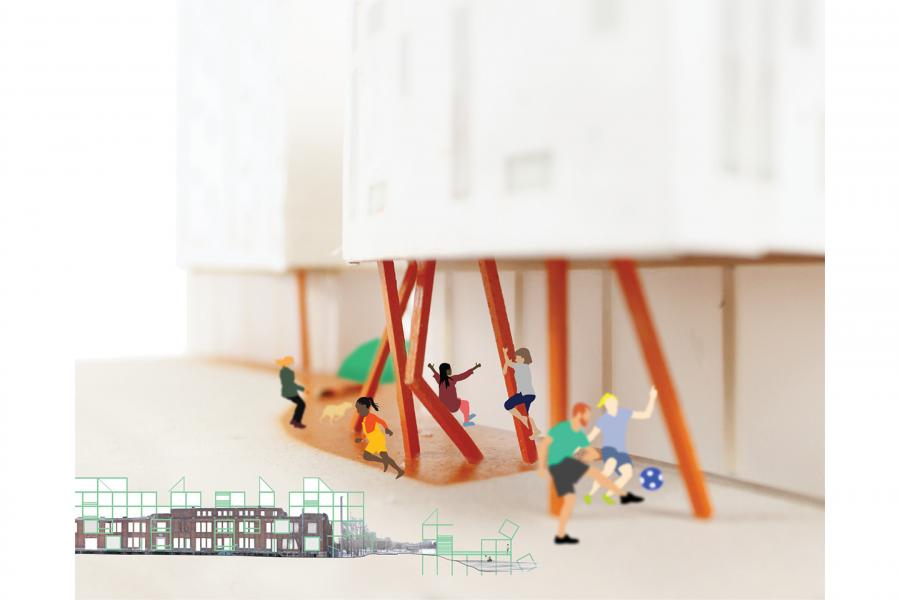
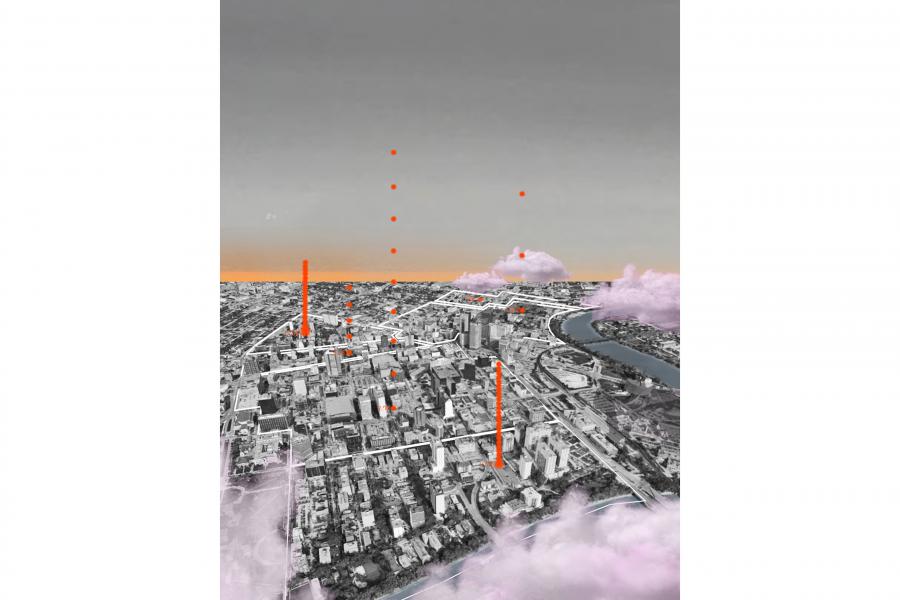
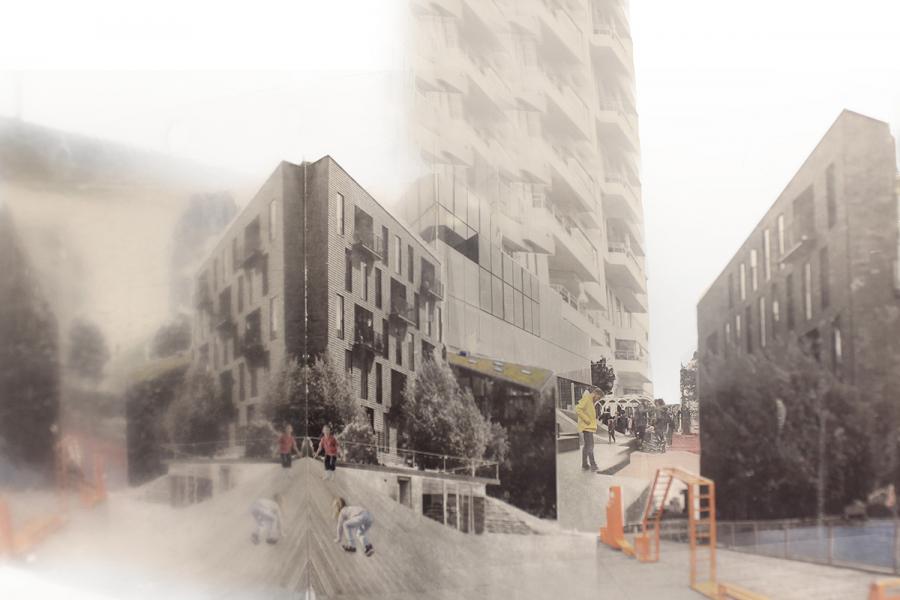
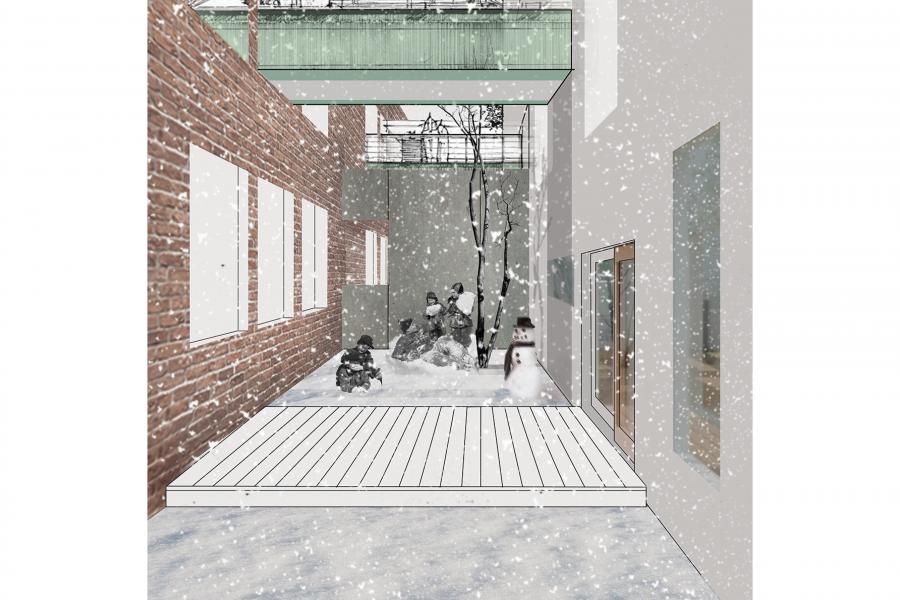
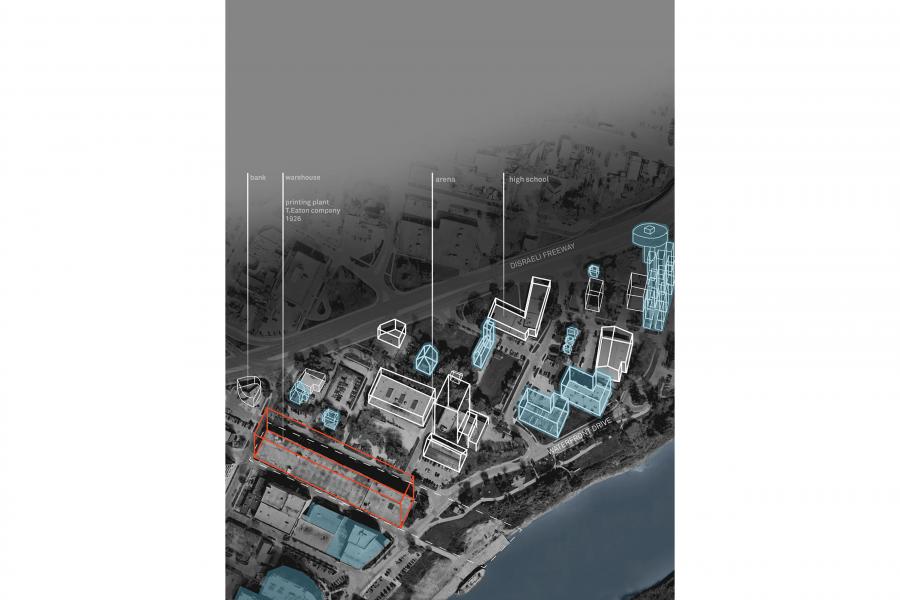
Architecture at Play
This design thesis is about incorporating play into architecture as a way of providing a new paradigm of urban living and multi-family housing in inner-city, Winnipeg. It is a response to the consistently expanding Canadian suburbs, mainly in the Prairie Provinces. The perspective is that the suburbs offer a better quality of living than the inner-city understood by its maintained growth, versus the inner-cities decline in residential density. This is not to say that the suburbs don’t have issues of their own. This research focuses on harnessing the built environments qualities and characteristics that make the suburbs attractive to families. Aspects that add value to the suburban environment may include having a yard, a garage, and space for storage. It will also discuss the ways in which value can be added to the existing characteristics of the city to in turn add value to the lived environment. Urban planner and geographer from Greece, Vivian Doumpa suggests that, “a city good for children is a city good for all”. Thus, incorporating play into architecture can re-invent what it means to live in the inner-city, because of its inclusivity.
The discussions of residing in downtown Winnipeg maintains a longstanding dialogue focused on inadequacies around affordability, space, safety, and comfort; qualities and characteristics which should be inclusive to all people. The work observes and explores the ways of contemporary quotidian life and what that means for the future of multi-family housing and communities in the inner-city, while providing quality experiences to the general public through play in architecture. For many who live, work, and play in this area, growing a family means moving to the suburbs because of the extremes in affordable housing standards. Architecture at Play is a search for a new paradigm of housing in the diverse, well established, but slow growth city-center whose total urban population is, none the less, growing by approximately 8,200 people per year1. It explores developing a higher expectation for urban design, the value added to urban living, and community building in mid-rise, mixed-use, multi-family, affordable housing in the inner-city.
The work focuses on creatively utilizing existing infrastructure and resources in currently disadvantaged areas. The objective is to alter the expectation of what is commonly understood as affordable family housing, to enable social cohesion, to address current housing needs, and allow the general population to benefit from existing and upgraded infrastructure.
1 Artibise, Alan F.J. (2012, September 11) Winnipeg. The Canadian Encyclopedia. Historica Canada. Retrieved November 20, 2019, from https://www.thecanadianencyclopedia.ca/en/article/winnipeg.
